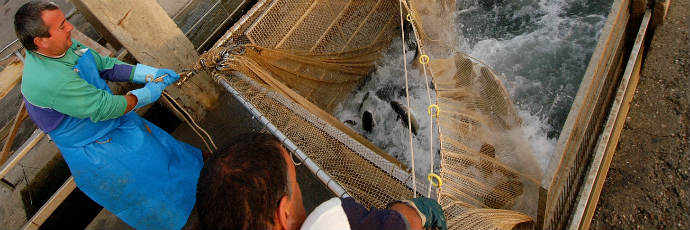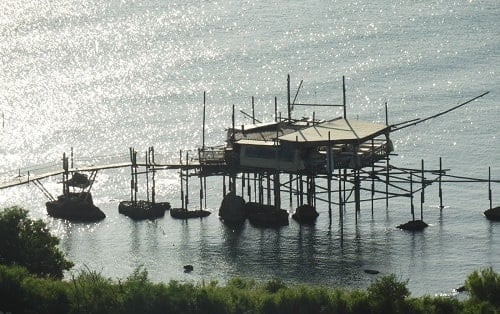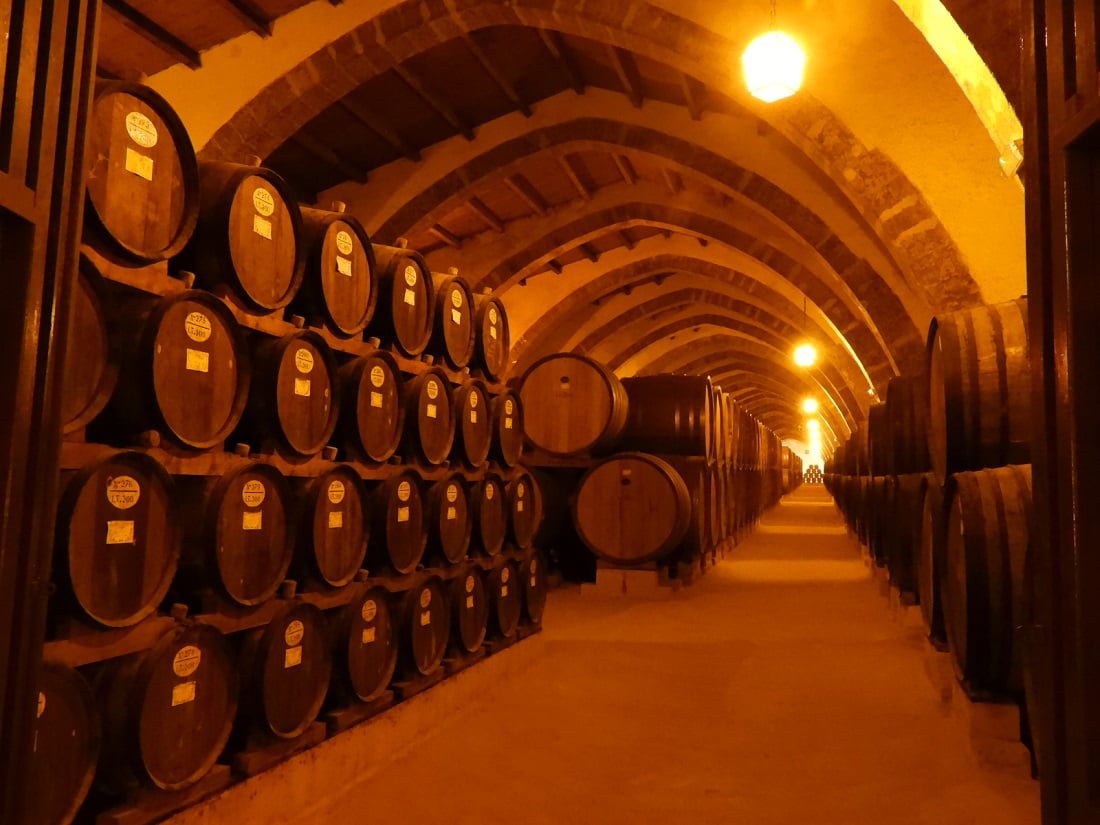
Fishing has a long history in the Orbetello Lagoon, and is essential to the local economy. Sea bass, sea bream, gray mullet, eels, small clams called calcinelli, mazzancolle (a type of shrimp) and small crabs called femminelle are the most commonly caught species, using traditional fishing techniques like the lavoriero, the martavello and the tramaglio. Over time, these systems have been modernized, but they have maintained their sustainability. The fish come to the nets on their own, based on the season and the tides, without the use of bait.
The lavoriero, a barrier once made from wood and now mechanized, is positioned in the channels that allow the exchange of water between the lagoon and the open seas. This system takes advantage of the high tide: As water enters the lagoon from the sea, it attracts shoals of fish towards the barrier and funnels them into a series of “deceptive chambers” that lead them to the “capture chamber,” where the fish, still alive and in the water, are selected by size and either hoisted up with nets or released. In some seasons, not only the high tide but also the reproductive instinct pushes the fish towards the lagoon’s outlet. The sexually mature fish are allowed to pass so that they reach the coastal waters, where they can reproduce. From here, the younger fish, thanks to the low tide, can re-enter the lagoon. The lavoriero is used to catch all of the lagoon’s fish species, as is the tramaglio, a bottom-set net formed of three layers of netting, used primarily in the summer and in November, December and January.
The martavelli and the traps are more selective. Positioned within the lagoon, they only catch eels, femminelle (winter crabs), mazzancolle shrimp and blennies. During the winter, the martavelli, funnel-shaped nets with a final chamber, are fixed inside “deceptive structures” made from nets, canes and poles. In the summer they are fixed inside less-complicated structures known as crocioni and can be moved every day.
Fish processing also has a historic tradition here. Apart from the classic smoking and marinating, two unusual techniques are a legacy of Spanish rule in the 16th and 17th centuries: sfumatura (the fish is seasoned with a sauce based on sweet peppers) and scavecciatura (a kind of escabeche, using a hot marinade of vinegar, rosemary, garlic and peppers).
Slow Fish played a significant role at Terre Madre this year, and it was a true education for me in discovering traditional fishing techniques across the regions of Italy. Most will be familiar with the fishing methods used in Abruzzo, the Trabocchi, The earliest documented existence of Trabocchi dates back to the 18th century, but it probably goes back to Phoenician times and was invented by farmers and not by fishermen.

